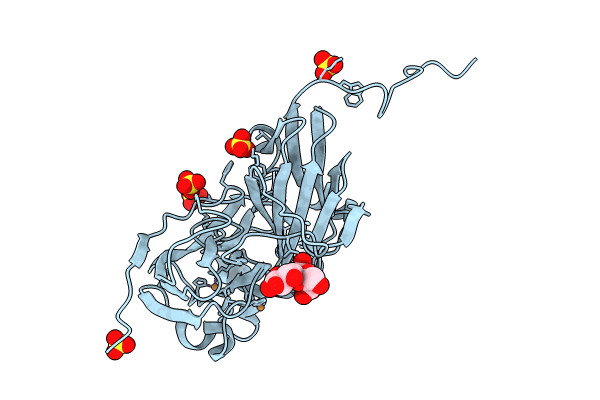
Deposition Date
2023-12-13
Release Date
2024-07-24
Last Version Date
2024-08-07
Entry Detail
PDB ID:
8RFU
Keywords:
Title:
Low pH (5.5) nitrite-bound MSOX movie series dataset 40 of the copper nitrite reductase (NirK) from Bradyrhizobium japonicum USDA110 [24.4 MGy] - water ligand + decarboxylated AspCAT (final)
Biological Source:
Source Organism:
Bradyrhizobium diazoefficiens USDA 110 (Taxon ID: 224911)
Host Organism:
Method Details:
Experimental Method:
Resolution:
2.18 Å
R-Value Free:
0.22
R-Value Work:
0.18
R-Value Observed:
0.18
Space Group:
P 63


